How global warming will someday end life on Earth
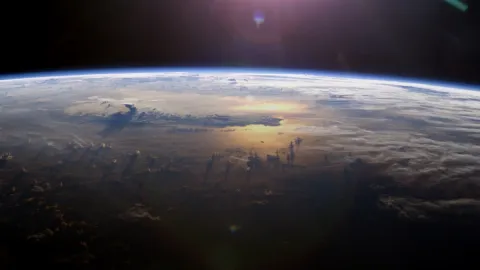
The Sun might not be responsible for the short-term warming we’re experiencing now, but in the end, it’s all that matters.
“We have known since the 1800s that carbon dioxide traps heat in the atmosphere. The right amount keeps the climate conducive to human life.”
–James Hansen
We like to think of our planet as perfect for life, having met all the conditions we know of for life to exist, flourish and thrive for billions of years. After all, here on Earth, with our not-too-thick and not-too-thin atmosphere, we’ve got liquid water on our surface, made possible by the pressure and temperature combinations at sea level. Luckily for us, we’re not just reliant on being a certain distance from the Sun.
Our Sun might be just another star like many others, but unlike the brighter, bluer stars that shine throughout the sky yet are short-lived, our Sun will shine at a relatively constant brightness for billions of years. And if the Sun shone at its current brightness, while all Earth did was absorb the sunlight during the day and radiate it back away at night, the laws of physics tell us in a straightforward fashion what the temperature on our planet’s surface ought to be: 255 kelvin (-18 °C / 0 °F).
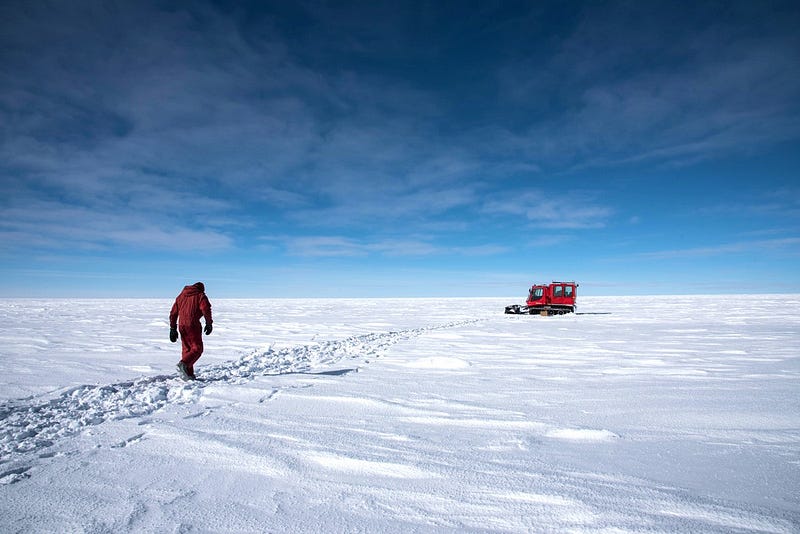
Yet you’ve probably realized that this isn’t the average temperature on Earth; our world is much warmer than this on average. The combination of cloud cover, carbon dioxide and water vapor — three things that absorb and “blanket” the infrared light our planet’s surface emits — keep our world a respectable 33 °C (59 °F) warmer than this terrifyingly low temperature. When Earth was much younger, billions of years ago, we even had large amounts of methane in the atmosphere, making our planet capable of holding even more heat in.
And while we don’t normally think of making Earth warmer as a good thing, back billions of years ago, it was absolutely necessary.
You see, back when the Solar System was younger, the Sun was not just younger, but also cooler. The way a star gets its energy is from nuclear fusion in its core: burning hydrogen into helium in our Sun’s case. When the core heats up to higher temperatures, the rate of fusion increases, and the star burns hotter. In most cases, we think of more massive stars as burning hotter (and hence, burning through their fuel faster), and this is true. But as a star ages, and more of its hydrogen gets converted into helium, the core begins to contract. Since gravitational contraction gives off energy, and there’s nowhere for that energy to go — it’s confined in the star’s core — the core heats up.
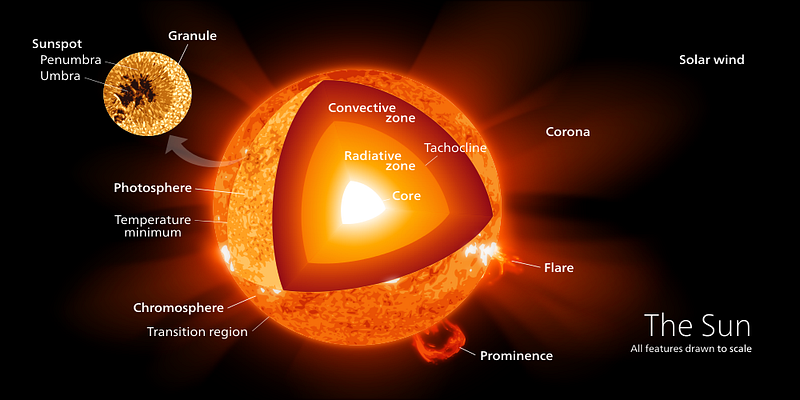
Put this all together, and we get an inescapable conclusion: as a star ages and burns through more and more of its fuel, it gives off ever increasing amounts of energy!
The Sun as it exists today, 4.5 billion years after the creation of the Solar System, is about 20% more energetic than it was at the earliest times. If it weren’t for the greenhouse effect of our atmosphere, early Earth would have been as frozen as Mars is today. But as time goes on, the Sun will continue to heat up. This won’t affect us on timescales of hundreds, thousands or even millions of years, but rather as the years tick by in the hundreds of millions.
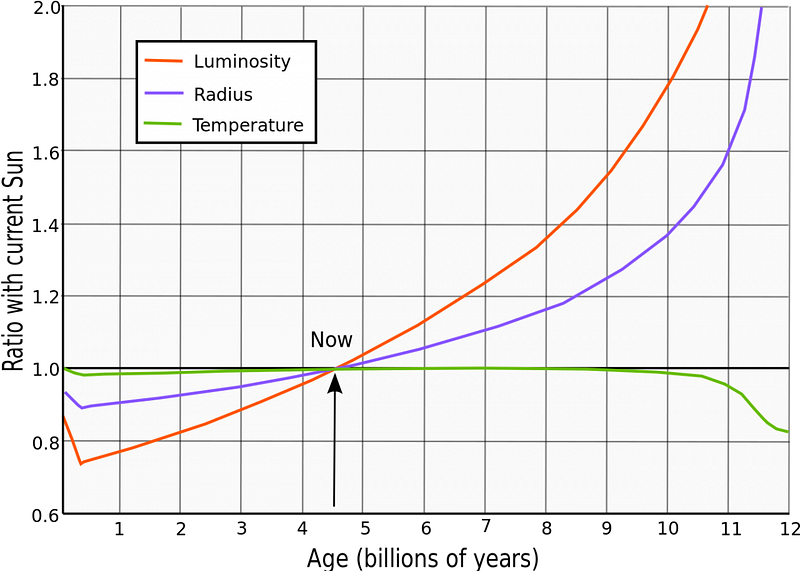
An increase of 1% in the solar flux won’t be catastrophic, but the solar luminosity increases by that much every 110 million years or so. At some point — after the flux has increased between 10% and 30%, depending on what our atmosphere looks like — we’re going to pass a critical point: a mean surface temperature of 373 kelvin (100 °C / 212 °F). In other words, at some point, the Sun will become so hot that the Earth’s oceans will boil. This is the ultimate form of global warming: a world so hot that water is impossible. At this point, life on our planet’s surface will be rendered impossible, although some clever species may make a new home in Earth’s (cooler) upper atmosphere.
The best estimates for this to occur is between one and two billion years from now, although there’s considerable uncertainty there, and plenty of time for us to figure out some clever solutions, such as spiraling Earth farther out from the Sun to a more suitable climate. If we don’t, however, and we allow nature to run its course, life-as-we-know-it will come to an end on our planet at that time, suggesting that perhaps cooler, dimmer (and more constantly-burning) stars like red dwarfs may make for better homes than a yellow-white star like our own.
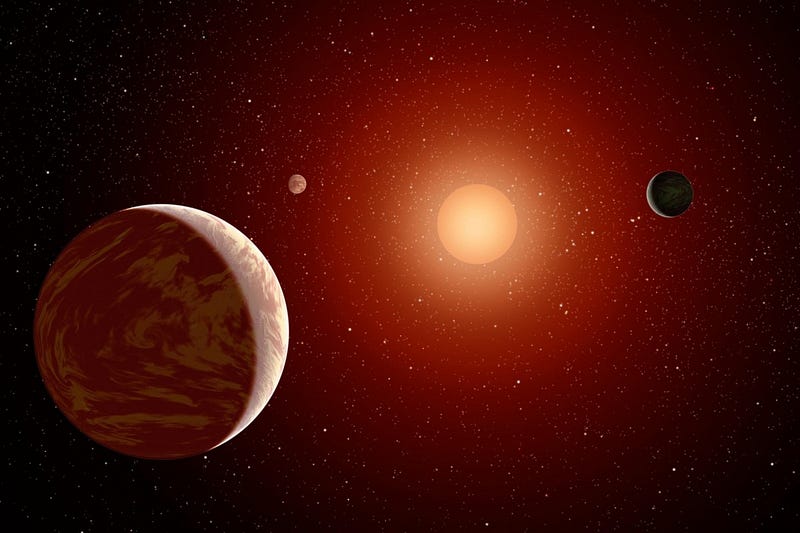
Global warming will destroy life on Earth in the end: not just human life, but all life on the planet’s surface, including in the seas. A billion or two years from now, long before the Sun becomes a red giant and starts fusing helium, the temperatures on our world will rise too high for plants, animals or any creatures we know to survive. Perhaps we’ll migrate to other stars, or to the outer worlds in our Solar System as they begin to warm. With a push in the right direction, they might become our new homes as Earth becomes more and more unsuitable.

No matter how you view it, we’re incredibly fortunate that life took the path it did to lead to us. If the Cambrian explosion or the workings of biological evolution were just a little bit slower, intelligent life like us may have never had the time to arise.
This post first appeared at Forbes, and is brought to you ad-free by our Patreon supporters. Comment on our forum, & buy our first book: Beyond The Galaxy!





